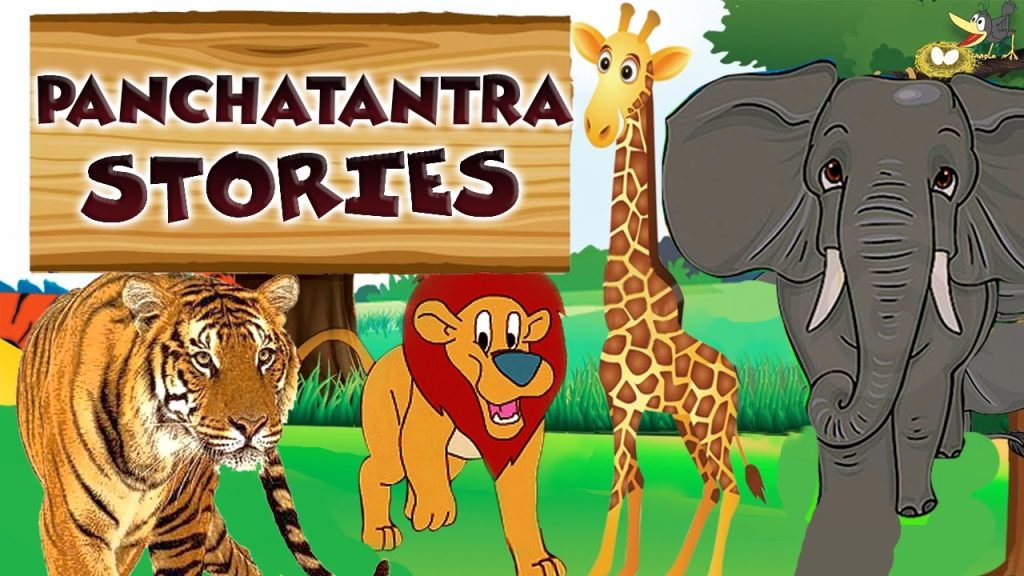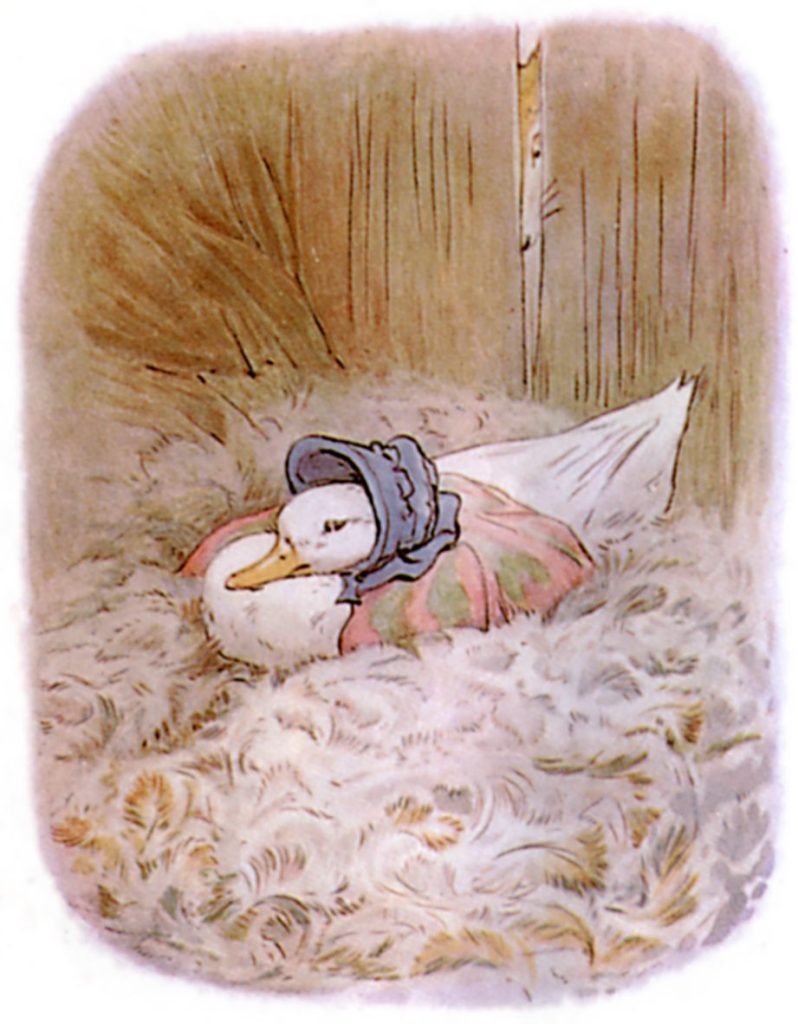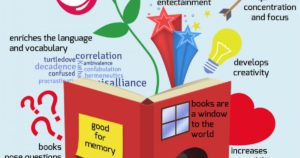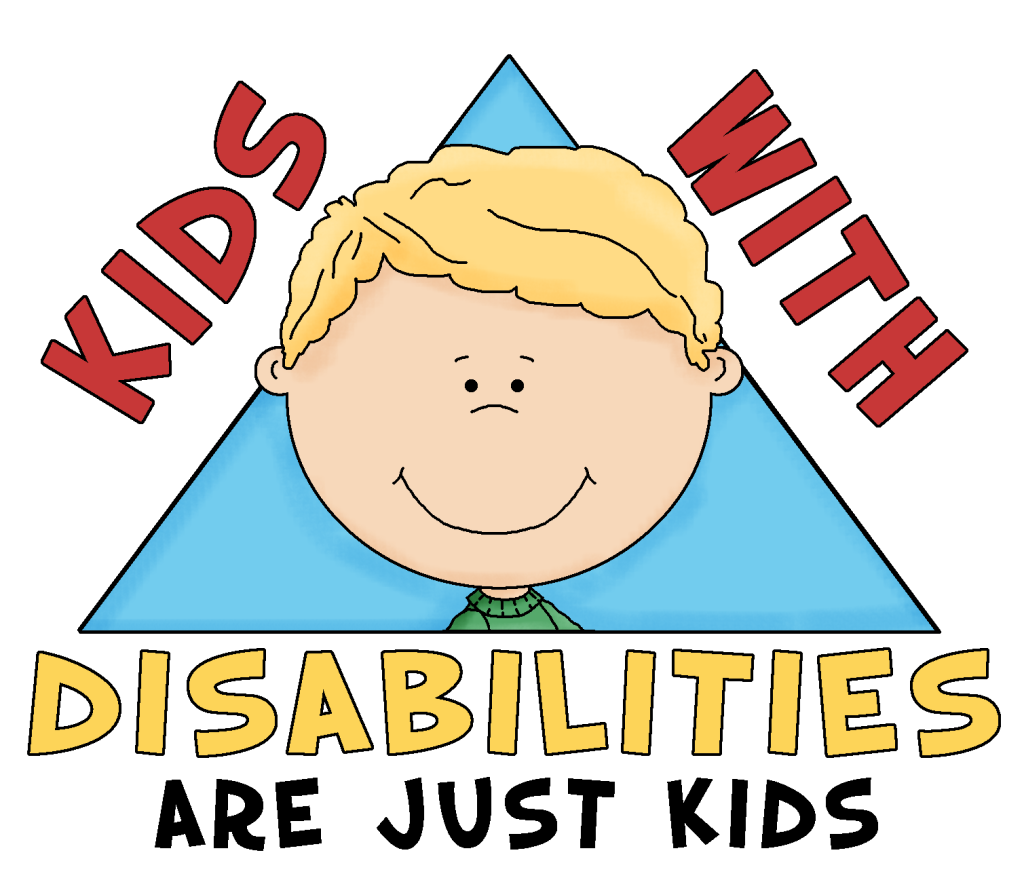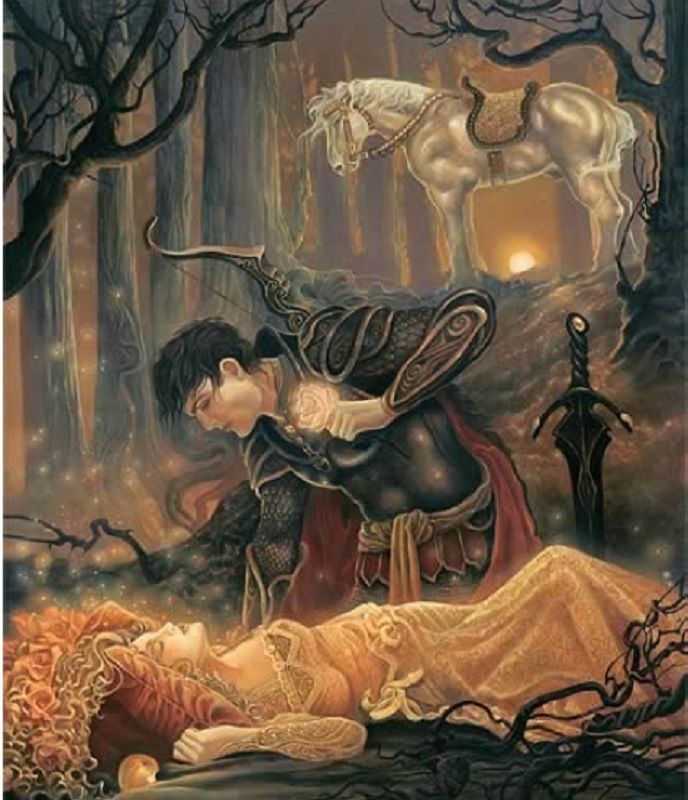Panchatantra is a collection of Indian stories featuring animals and some priceless moral lessons. Here, we will list 10 popular stories from Panchatantra as well as some benefits of reading them.
- 10 interesting Panchatantra stories for children
- 1. The stork and the crab
- 2. The monkey and the crocodile
- 3. The elephants and the mice
- 4. A tale of three fish
- 5. The loyal mongoose
- 6. The tortoise and the geese
- 7. The jackal and the drum
- 8. The foolish Lion and the clever rabbit
- 9. The wise minister’s advice
- Moral of the The wise minister’s advice Panchtantra Story:
- 10. The musical donkey
- Benefits of reading Panchatantra stories
- FAQs
10 interesting Panchatantra stories for children
To make storytime fun and informative, here are some stories from Panchtantra that will not only enhance your child’s imagination but also teach them something new.
These stories are translated into many languages. To read Panchatantra stories in Hindi click here. For stories in Kannada visit this website and for Tamil click here.
Without further ado, let us begin!
1. The stork and the crab
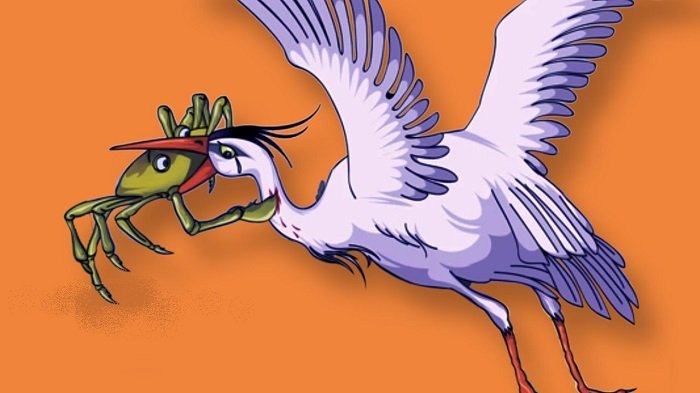
Once, there lived a stork who used to eat the fish from the pond beside him. However, as he grew older, he found it difficult to catch fish. So, to continue to feed himself, he thought of a plan. The stork told all the animals living in the pond that some men were planning to fill the pond and grow crops. Thus, the fish won’t be able to live in the pond.
As the fish were sad, the stock then offered to carry them to a larger pond, however, he told them that he would only be able to carry a few fish at a time as he was old. The stork would then take the fish to a rock, kill and eat them up. He would repeat this every time he was hungry.
There was a crab living in the pond, who also wished to go to the larger pond. The stork, thinking that he could eat the crab, offered to carry him to the big pond. However, soon, the carb found out the stork was going to kill him, so he held on to its neck and did not let go until the stork died.
The_Stork_and_the Crab – Download
Moral of the The stork and the crab Panchtantra Story
This story shows that it is essential to always have a presence of mind and act quickly when in danger.
2. The monkey and the crocodile

A monkey lived on a Jamoon tree in a forest on the banks of a river. A crocodile and his wife also lived in the same forest. One day, the crocodile arrived at the river’s edge and sat under the Jamoon tree. As he was kind-hearted, the money offered him some fruits. The crocodile returned the next day for more fruits since he liked the fruits a lot and soon the monkey and the crocodile became good friends.
One day, the monkey sent some fruits to the crocodile’s wife. Although she ate the fruits and enjoyed them, she was envious of the time her husband spent with the monkey. The wife then told her husband that if the fruits were so delicious, the monkey’s heart would be sweet as well. So, she asked him to get her the monkey’s heart.
Although the crocodile was not willing to kill his friend, he agreed to do so as he had no other choice. He invited the monkey to supper and said his wife would enjoy meeting him. Since the monkey couldn’t swim, the crocodile carried him on his back. On the way back home, the crocodile revealed the true motive for taking the monkey home. The clever monkey then replied that he had left his heart on the tree so they had to return to get it. The foolish crocodile believed him and took him back to the Jamoon tree. Thus, the wise monkey lived.
Moral of the The monkey and the crocodile Panchtantra Story
Always have a presence of mind and choose your friends carefully.
3. The elephants and the mice
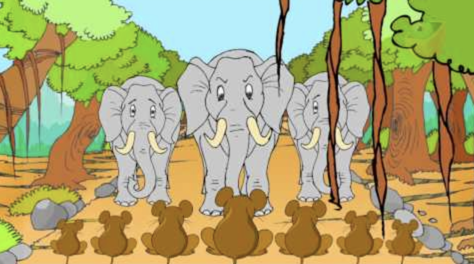
A community was abandoned by its inhabitants after it was damaged by an earthquake. However, the mice living in the village chose to stay and make it their home.
There was a lake on the borders of this settlement where a herd of elephants came to wash and drink water on a daily basis. These elephants stomped the mice as they walked to the lake. Frustrated, the king of mice made the decision to meet the elephants. He warned them that many mice are trampled as they go through the village and requested them to modify their route. He also offered to repay the favour when the elephants required it.
The proud elephants laughed at the suggestion and declared that there was no favour that the mice would be able to repay. However, the elephants still complied with the request and altered their route.
One day, the elephants became trapped and entangled in nets set up by hunters. They tried everything they could to get away, but it was in vain. The elephant king was reminded of the vow made by the mouse king. As a result, he dispatched a fellow elephant, who was not caught, to request assistance from the mice king. Soon after, all of the mice arrived and began nibbling on the netting, thus, freeing the elephants.
Moral of the The elephants and the mice Panchtantra Story:
Thus, the story aptly depicts the phrase “A friend in need is a friend indeed”. This you must always be kind to people, and thankful for their help.
4. A tale of three fish
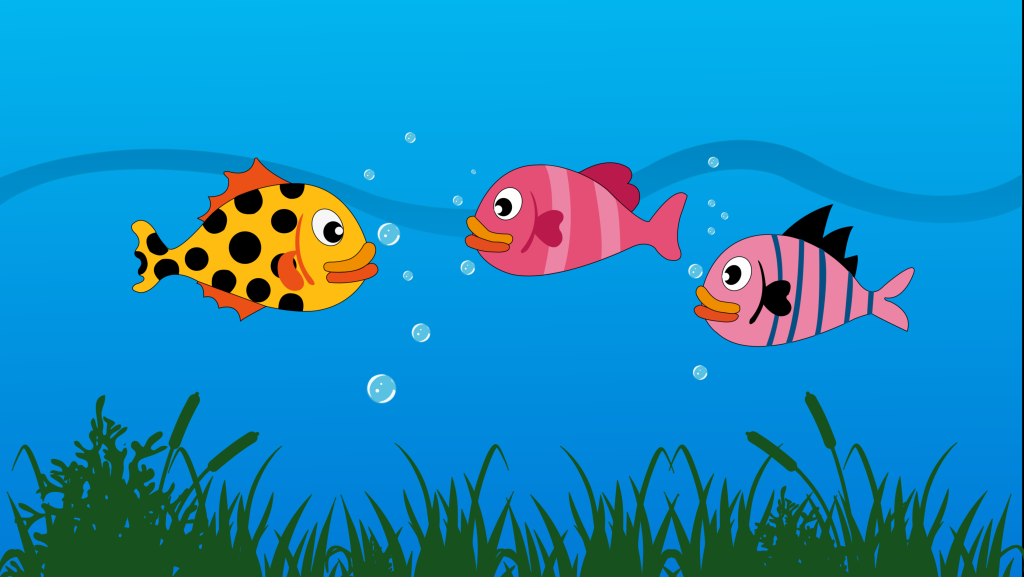
Three fish lived in a lake and were great friends. The first fish was extremely intelligent, the second understood how to get himself out of difficulties, and the third was stubborn and despised change. One day, the first fish overheard a fisherman talking about returning to the lake the next day to fish. He warned his pals to get out of the lake because he sensed danger. The second fish remarked that if he was caught, he would be able to find a way out, thus, he would not leave the lake. The third fish also refused to leave the lake. So, the first fish swam away. The fisherman returned the next day and captured the last two fish. The second one skilfully eluded capture by pretending to be dead. However, the third fish remained still and was captured and killed.
Moral of the A tale of three fish Panchtantra Story
You should constantly be willing to adjust to new situations. Furthermore, when you detect danger, you take prompt action.
5. The loyal mongoose
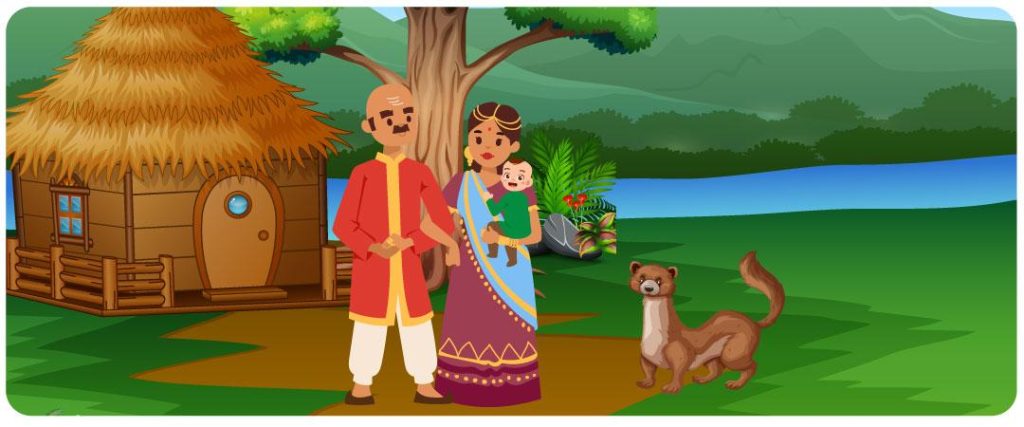
A farmer and his wife had a pet mongoose. One day, the couple, needed to leave the house for work, so they left their child with the mongoose, certain that he would look after him well. While they were gone, a snake crept into the house and approached the infant’s cradle, ready to attack. To safeguard the infant, the wise mongoose battled and killed the snake.
On returning, the farmer’s wife was surprised to find bloodstains on the mongoose’s mouth and teeth. Thinking that the mongoose killed her child, she lost control of her rage and killed the loyal mongoose. However, she found the kid alive and the dead snake near him when she entered her house. She realised what had happened and regretted her actions.
Moral of the The loyal mongoose Panchtantra Story:
You must always think before you act.
6. The tortoise and the geese

Once upon a time, a tortoise and two geese lived alongside a lake and were best friends. However, the geese chose to relocate to a new location after the lake dried up. The tortoise wanted to join them, but he couldn’t fly, so he pleaded with the geese to take him along with them. To carry the tortoise, they instructed him to bite on a stick and instructed him not to open his mouth and let go of the stick, till they reached the new location.
As they flew high in the sky, several bystanders misunderstood the situation and assumed that the tortoise was kidnapped. This infuriated the tortoise, who quickly opened his jaws to respond. He collapsed to the ground and died.
Moral of the The tortoise and the geese Panchtantra Story
This story clearly depicts that you must always pay attention to what’s being said and follow instructions. Furthermore, you must also think before speaking.
7. The jackal and the drum

Once upon a time, a jackal ventured away from his habitat and found himself on a desolate battlefield. As he was starving, he began searching for food, and while doing so, he heard an odd noise. The terrified jackal fled but came back to find out who was producing that sound. As he looked around, he saw an abandoned drum next to a tree. The drum was generating a sound as the tree branches brushed against. He then felt relieved and went back to looking for food.
Moral of the The jackal and the drum Panchtantra Story
The moral of the story is that you must always face your problems and not run away from them.
8. The foolish Lion and the clever rabbit
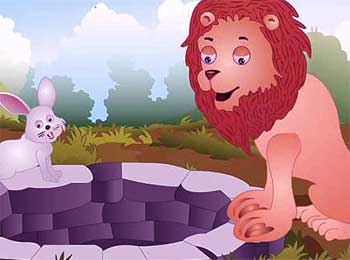
Once upon a time, there was a hungry lion that hunted down and slaughtered animals. Thus, every animal in the jungle was terrified of him. One day, they determined that each day, a different animal would serve as the lion’s prey and the lion agreed to this.
When it was the wise old rabbit‘s turn, he took his time and arrived at the lion’s cave just before twilight. When asked why he was so late, the rabbit replied that a number of rabbits were on their way but they were attacked by another vicious lion. He also said that he was the only one who was able to flee and make come to the lion. Finally, the rabbit said that the second lion was challenging this one.
The furious lion demanded that the rabbit accompany him to meet the new lion. The smart rabbit then led the lion to a deep well, where he saw himself reflected in the water. As the lion snarled, so did his reflection. As he considered this reflection as his enemy, the angered lion attempted to attack by jumping into the well. However, he drowned. As a result, the wise old rabbit and all the creatures in the forest were spared.
Moral of the 8. The foolish Lion and the clever rabbit Story
Rather than focusing on issues, you should constantly try to find solutions.
9. The wise minister’s advice

One night, in a forest, a gang of owls attacked and slaughtered a group of crows. The crows couldn’t fight back since they couldn’t see clearly at night. Concerned, the King of the Crows sought advice from his wise old minister.
The next day, on the advice of the minister, the crows went to the owl’s cave and put on a spectacular display. One crow pretended to admire the owls, and so, the others attacked him. When the Owl King saw this, he assumed that the crow was on the side of the owls.
The crow continued to live with the owls until one morning when he flew away and along with his friends, set fire to the owl cave’s entrance. As owls are nocturnal species, they were all killed while they were sleeping.
Moral of the The wise minister’s advice Panchtantra Story:
This story aptly depicts the phrase” Keep your friends close, but your enemies closer”.
10. The musical donkey
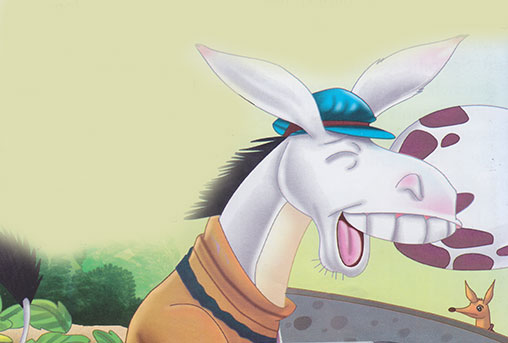
After a long day’s work, a washerman’s donkey would be free to graze on a green field. Rather than staying on the field, he would sneak into the villagers’ farms and eat the vegetables that were growing there before returning home. One day, the donkey met a jackal. Soon, the donkey and the jackal became good friends and also agreed to go hunting together. The donkey would break the fence to eat vegetables, while the jackal hunted farm animals.
One night, The donkey informed the jackal that he felt like singing. The jackal begged him not to sing because they would be discovered. However, the donkey became irritated and insisted on singing. He opened his lips and started braying loudly, and the jackal immediately ran away.
The farmers rushed out after hearing the donkey bray and whipped him for eating their veggies. The farmers then attached a mortar to the donkey, and the jackal joked about the farmers giving the donkey a necklace in exchange for his singing.
Moral of the The musical donkey Story:
The moral of the story is that everything has its time and place.
Benefits of reading Panchatantra stories
1. It is a fun activity
As most of the characters in Panchatantra are animals, kids enjoy reading it. Furthermore, the animal characters in the stories make it easier for children to remember and relate to certain stories.
2. Aid in brain development
Through Panchatantra stories, kids learn human action and reaction in different situations. Thus, these stories help them learn how to handle real-life situations.
3. Provide moral lessons
Panchatantra stories are the best way for children to imbibe moral values. These stories, showcase values like friendship, discipline, intelligence, strength etc, which are sure to impact the daily life of children.
4. Teach rich Indian heritage values
Panchatantra tales display Indian culture and values that are relevant to all communities across the world. They focus on four objects of human desire, namely, neeti, that is policymaking, artha meaning worldly wisdom, kama, meaning pleasure of the senses and dharma or religion or morally proper conduct.
5. Provide good family quality time
Storytelling is a great way to bond with children. Parents can engage children in the narrative and also ask questions to make it a two-way conversation.
6. Reading habit
Young children imbibe good reading habits at an early age. Thus, they can enjoy listening to and reading stories.
FAQs
1. What is the total number of Panchatantra stories?
The Panchatantra is made up of five volumes that were originally written in Sanskrit. It contains 84 tales as well as several interpolated stories.
2. Why is Panchatantra called Panchatantra?
Vishnu Sharma wrote short moral stories organised into five volumes, that were called Panchatantra where Pancha means “five” and tantra means “principles”.
3. Who wrote Panchatantra and why?
Panchatantra was written by Vishnu Sharma, a renowned Indian scholar. The story of why he wrote it is as follows.
There was once a monarch named Amarashakti. He was the king of Mahilaropyam, a kingdom in south India. Bhaushakti, Ugrashakti, and Anantashakti, his three sons, were not very smart. Thus, the king desired something to change his sons so that they would be worthy of leading the kingdom. The three princes, on the other hand, were opposed to learning.
One day, the monarch learned of an Indian scholar named Vishnu Sharma. The king approached him with the hope that he would take on his sons as students and teach them essential life skills.
Vishnu accepted and pledged to teach them in six months. When Vishnu began educating the princes, he immediately understood that typical teaching methods would not work with them due to their short attention spans and the tendency for boredom. Thus, he chose to use the power of storytelling to motivate his students. These stories are the Panchatantra.
4. What is the structure of the Panchatantra?
The Panchatantra is a blend of poem and prose in its original form. The stories are mostly told in prose, but the lessons learned from them are frequently delivered in rhyme. Panchatantra immerses its audience in a sequence of stories that become increasingly complex as they go from one level to the next.
6. How many languages was the Panchatantra translated into? And how many retellings of the stories are there?
The Panchatantra’s subject matter and fascinating stories made it an extremely popular work. Thus, it was translated into several languages. Panchatantra is available in almost all Indian languages, and there are more than 200 translations in more than 50 languages throughout the world.
There are also several retellings of the stories. Some of them are:
1. Edge
Franklin Edgerton’s 1924 reconstruction of the original Panchatantra’s Sanskrit text. It is the foundation for English translations by Edgerton (1924) and Patrick Olivelle (1997 & 2006). Edgerton’s reconstruction closely resembles the substance of two other key versions, the “Southern” Panchatantra and the Tantrkhyyika.
2. Durg
This is the Kannada translation of Panchatantra. It is one of the oldest surviving translations into an Indian vernacular and is from 1031 CE.
3. Soma
Somadeva’s Kathasaritsagara (“Ocean of Streams of Story”), published in 1070, is a huge collection of tales and legends. It includes a rendition of the Panchatantra accounting for almost half of Book 10.
4. Purn
Purnabhadra’s revised edition of 1199 CE is one of the longest Sanskrit versions, and it serves as the foundation for both Arthur W. Ryder’s 1925 English translation and Chandra Rajan’s 1993 English translation.
5. Nara
Narayana’s Hitopadesha is the most popular rendition in India, and it was the second book to be translated from Sanskrit to English. However, Narayana divided, merged, and reordered his source stories more than most other Panchatantra revisers, his stories differ quite a bit.
The table below details all the stories and their retelling in different books.
Retellings of Panchatantra
| Story | Edge | Durg | Soma | Purn | Nara |
| The barber who killed the monks | V.2 | II.2 | V.Frame | III.10; IV.13 | |
| The friendship between a crocodile and a monkey | IV.Frame | IV.Frame | 133 | IV.Frame | |
| The frogs that went for a ride on the back of a snake | III.10 | III.8 | 121H | III.16 | IV.12 |
| The thief, the ogre, and a Brahmin | III.7 | III.5 | 121E | III.10 | |
| Partridge and hare take their case to the cat | III.4 | III.1.1 | 121BBB | III.3 | I.4 |
| The owl is elected king of the birds | III.2 | III.3 | 121B | III.1 | |
| The enmity between crows and owls | III.Frame | III.Frame | 121 | III.Frame | IV.1 |
| The ascetic and the mouse | II.1 | V.4 | 97A | II.2 | I.5; I.6 |
| How mouse cut the net that imprisoned the pigeons | (II.Frame) | V.1 | (II.Frame) | ||
| The hare that outwitted the lion | I.6 | I.8 | 84D | I.7 | II.9 |
| The ascetic and the rogue | I.3a | I.5 | I.4a | ||
| The jackal that tried to eat a drum | I.2 | I.4 | 84B | I.2 | |
| The unfaithful wife Tantuvayika | I.5.2 | ||||
| The watersnakes and a cobra | I.11.1 | ||||
| Jackal outwits lion | I.21 | ||||
| The girl who married a snake | I.23 | ||||
| Twin parrots | I.10 | I.29 | |||
| The man who got what was coming to him | II.5 | ||||
| The mice who rescued the elephant | II.8 | ||||
| How owls started to hate crows | III.1 | ||||
| How ants killed the snake | III.5 | ||||
| The sage who changed his pet dog into different animals | III.7.1 |
Share with your friends

